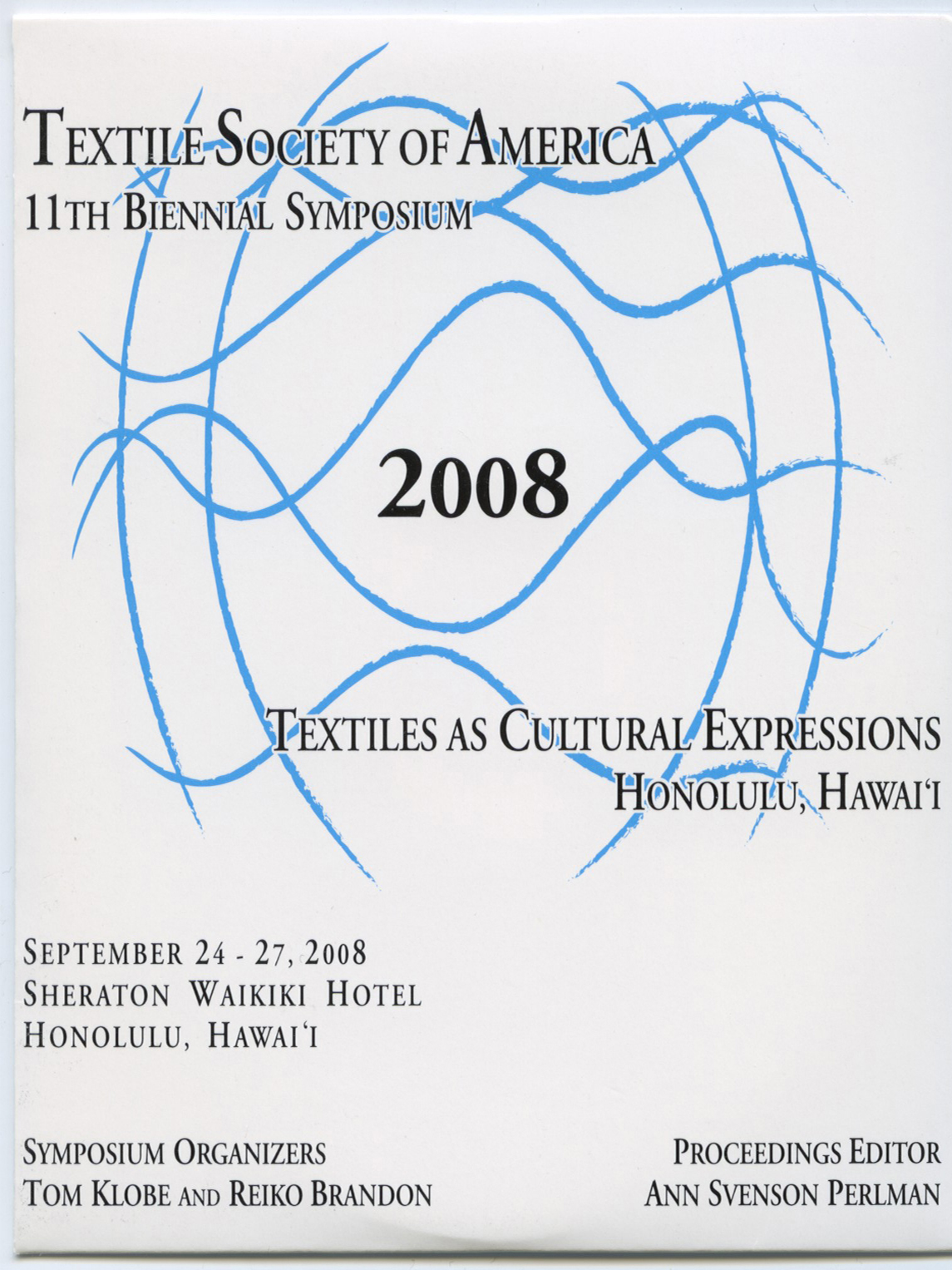
The Hawai‘i Organizing Committee for the11th Biennial Symposium of the Textile Society of America and the Sheraton Waikiki Hotel extend Hawai‘i’s fabled aloha to scholars, artists, museum and gallery professionals, educators, and textile enthusiasts from around the world.
Honolulu, the cosmopolitan capital of the state of Hawai‘i, is a meeting place of Western, Asian, and Pacific cultures, languages, and arts. Hawai‘i’s rich international diversity provides an appropriate site for discourse on the symposium theme “Textiles as Cultural Expressions.”
We are delighted that the symposium program is strongly international with presenters from East and Southeast Asia, the Pacific region, Europe, and the Americas. The collective expertise of TSA members informs the entire program of the symposium and provides the opportunity to gain inspiration from the knowledge and research of our colleagues.
Site seminars, exhibitions, and tours focusing on Asian and Pacific textiles were offered throughout Honolulu at major museums, galleries, and art institutions. Local researchers, artists, and teachers shared our abundant textile resources, particularly of Hawaiian, Pacific, and Asian textile traditions, many of which are rarely available or known outside of Hawai‘i.
Renowned contemporary artist Kimsooja presented the keynote address A Needle Woman at the opening session on Thursday, September 25. Inspired by the needle work of her grandmother in Korea, Kimsooja has set out on a journey that often uses textiles to expressively address issues of the displaced self—of migration, refugees, war, difficulty, and the passing from one border to another. Native Hawaiian artists/scholars Maile Andrade and Marques Marzan were the plenary session speakers on Friday and Saturday mornings. Andrade explored contemporary visual reflections from an indigenous perspective based on ancestral creations that delve into the surfaces within. Marzan discussed the cultural significance and history of rare makaloa mats and the efforts being taken to reawaken this slumbering knowledge.
In the final presentation, Dressing for the Hula: Textiles as Cultural Expressions in Hawai‘i, as the Halau Hula Ka No‘eau performs, Michael Pili Pang explained the meaning of the hula and the significance of the gathering of fibers and objects in its preparation.
Visitors enjoyed the International Textile Marketplace, brimming with treasures from more than 25 vendors from around the world, open from 10:00 a.m. to 6:00 p.m. on Thursday and Friday in the Lana‘i Ballroom. On Saturday from 10:00 a.m. to 2:00 p.m. in the Lana‘i Ballroom, visitors experienced the aloha that local artisans bring to their work as they demonstrated local fiber traditions.
Co-Chairs: Reiko Brandon and Tom Klobe
